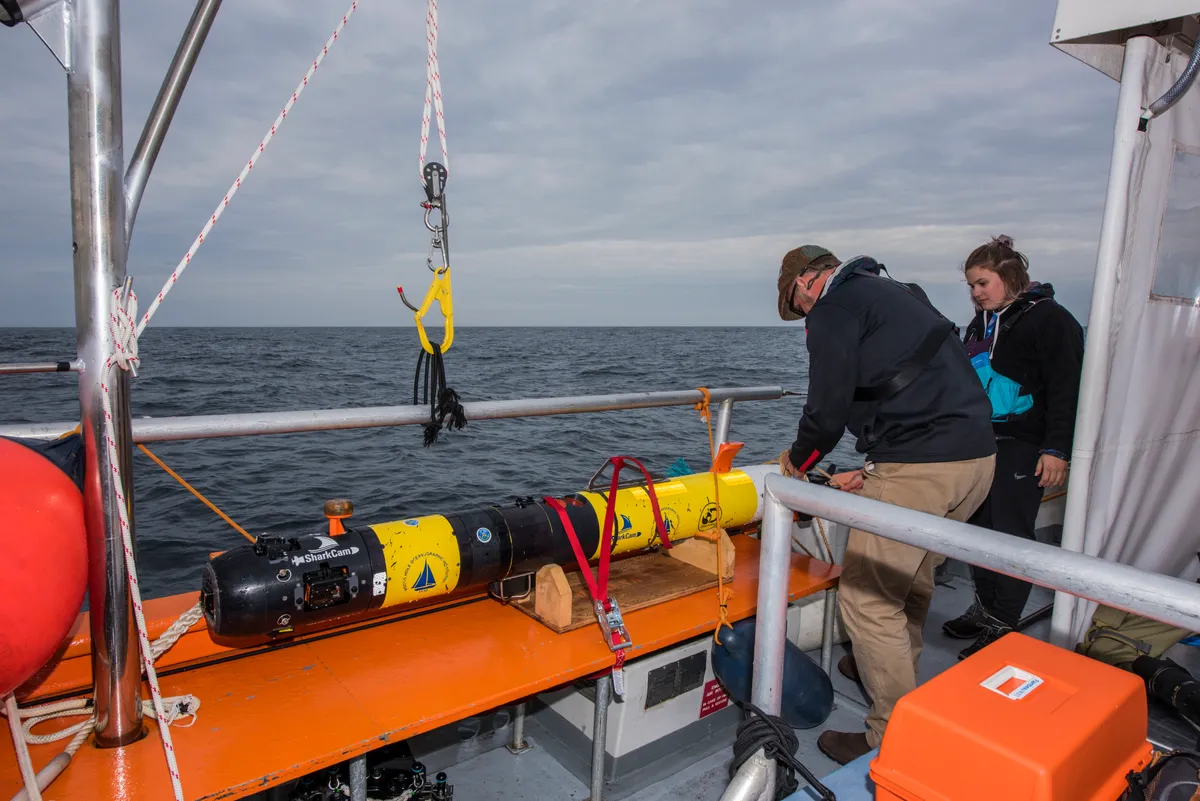Though basking sharks are common in the waters around the west coast of Scotland, little is known about this elusive shark and its life beneath the waves.
Now, for the first time, scientists from WWF/Sky Ocean Rescue, Scottish Natural Heritage (SNH), Woods Hole Oceanographic Institution (WHOI), and University of Exeter hope to shed new light on the world’s second-largest fish by using underwater robotic cameras to capture images and high-definition video of their behaviour, uncovering more information about their social interactions, group behaviour, and courtship.
It is hoped that data gathered by the study could prove crucial in creating the world’s first protected area for basking sharks.
The Inner Hebrides, where the study took place, is one of just a few locations worldwide where large numbers of the sharks can be found feeding in surface waters each year. The area is currently one of four possible Marine Protected Areas (MPAs) currently under consultation by the Scottish Government.

In addition to hours of footage from the camera (dubbed ‘SharkCam’), visuals from towed camera tags attached to sharks, and deployment of solar imaging will help to create a strong case in support of the location becoming an MPA, which would greatly benefit basking shark conservation and improve understanding of the species' life and habitat.
Initial footage recorded last month has already surprised scientists, as it showed the sharks swimming close to the seabed.
Dr Suzanne Henderson, Marine Policy and Advice Officer at SNH, explains: “This year’s collaboration has allowed us to use a combination of camera technologies and given us a glimpse of basking sharks’ underwater behaviour — a real first and very exciting. The footage has already made us reassess their behaviour, with the sharks appearing to spend much more time swimming just above the seabed than we previously thought.
“It really brings home why it’s so important that the species and its habitat are protected by designating the Sea of the Hebrides as a Marine Protected Area.”
Main image by Alan James/WWF/naturepl.com.